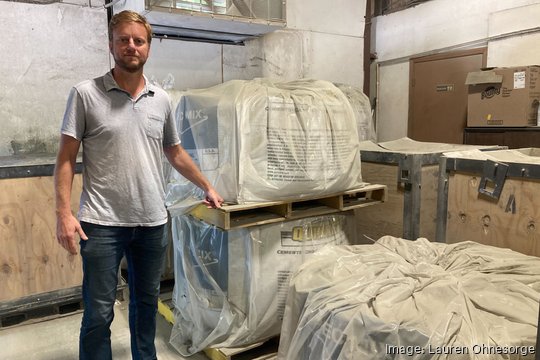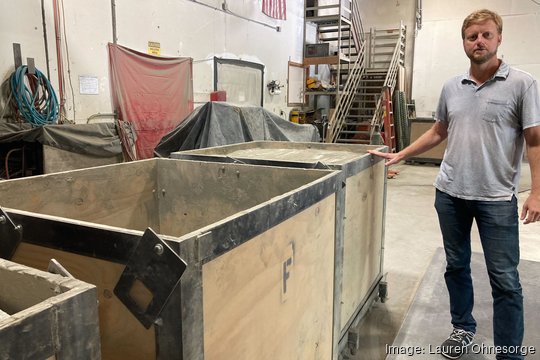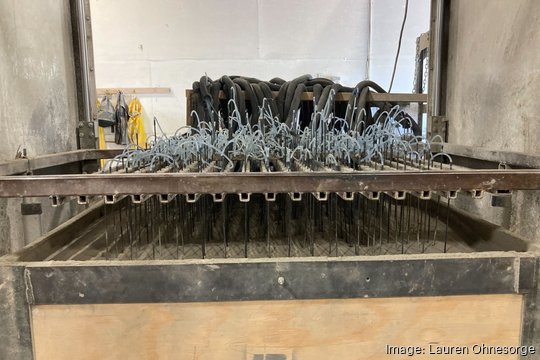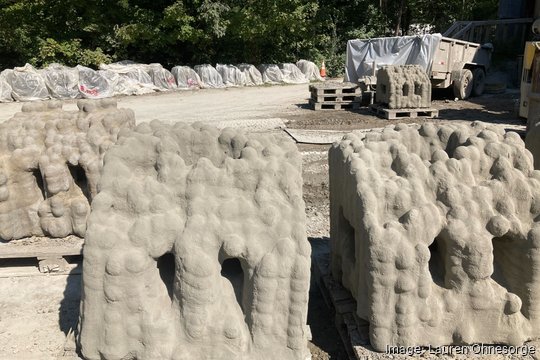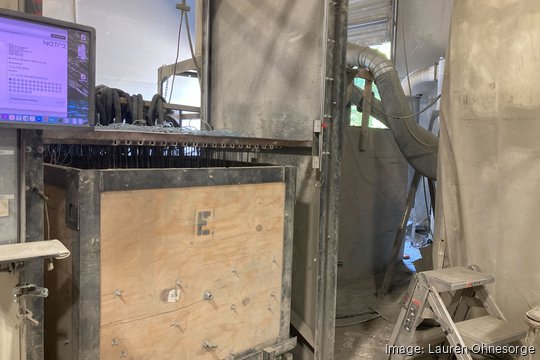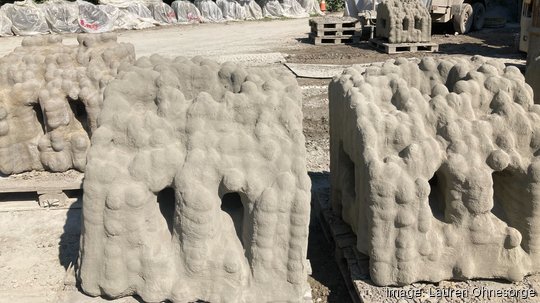
At a nondescript facility off Glenwood Avenue in Raleigh, a team of scientists and manufacturing technologists are building seawalls, jetties and coral reefs – battling the tides of climate change with a new take on concrete.
Meet Natrx, a Raleigh startup led by CEO Leonard Nelson.
The material it’s making starts with a 3,000-pound bag of mix that's loaded into a massive box. From there, it’s transported to a machine loaded with hundreds of little needles. The needles “dose” the dry powder with water via a precisely controlled injection.
On a recent Wednesday, the needles were building material to beef up an eroding shoreline for a private homeowner along the James River in Virginia.
Like a drip sandcastle, the needles are creating a solid structure, a mesh of aggregate – from sand to recycled dredging materials. It's a block that Nelson compares to an “all-natural Lego.”
It’s a building material that blends into the natural environment. In addition to forming the basis for jetties, seawalls, artificial coral structures and projects involving offshore innovation such as wind turbines, the material creates homes for organisms. Over the years it becomes a modular, living reef of sorts.
“It’s hard for people to wrap their head around how it works,” says Nelson, who cofounded the company with fellow N.C. State colleague Matthew Campbell. But it’s easy to see the outcome, a new kind of concrete that can help in the battle against climate change, protecting manmade structures and sandy shorelines from the storm tides. And it’s happening in Raleigh, where the production facility near Raleigh-Durham International Airport is pumping out 4,000 tons of material each year.
Natrx is creating artificial reefs in Raleigh - Here's how it works
Soon the output will be even greater, as production facilities are opening in Louisiana and Hawaii, each capable of producing 20,000 tons a year.
The company, at 12 full-time employees, is hiring. And it’s considering its expansion options in the Triangle as production of the “exo-forms” increases.
Inside the innovation
Nelson describes it as reimagining concrete, which has seen its production largely unchanged since Roman times – water mixed with binders into a slurry and molded. The wet concrete dries and the structure is formed. Natrx, conversely, uses a dry technology, appropriately called “dry-forming.” It doesn’t use molds. The injections – which come from robotically controlled needles – “grow” the concrete similarly to how coral works.
The result is a structure with a high surface area – perfect for creatures from corals to oysters.
“Our technology is nature-inspired, and we’ve been able to scale it up to industrial scale,” Nelson said.
The goal is a lighter, cheaper and more sustainable construction option than the impermeables that have become standard in construction, he said.
“We operate at the interface between the built environment and the natural world,” he said. Right now, it’s primarily used in coastal protection applications – but someday the material could be used in other ways, from bridges to roadways.
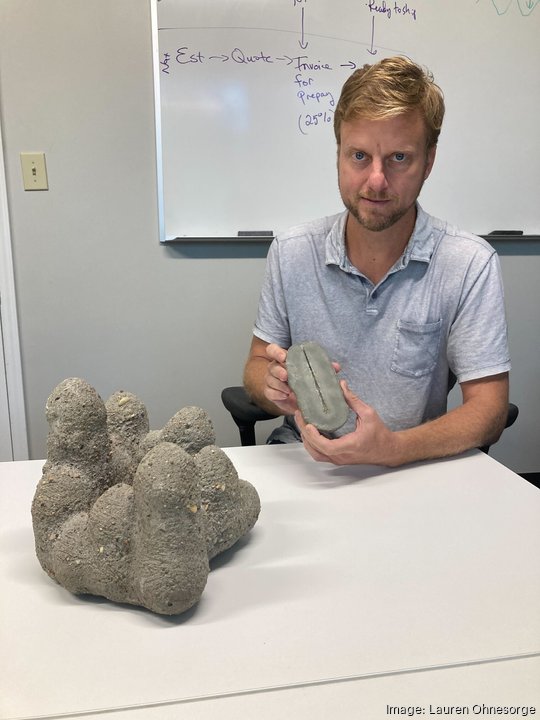
Nelson said the focus initially is on the lower-hanging fruit of applications. He points to coral reefs, where across the globe, 150 billion tons have been lost. Corals, oysters, barnacles – they need hard substrates to attach to, and without them, restoration is difficult. That’s where Natrx comes in, recreating the substrate with the same surface area conditions to help reefs recover faster.
N.C. State roots
The technology at the heart of Natrx originally comes from Louisiana, where extreme erosion has caused land loss equivalent to the state of Delaware over the past several decades.
The founders of a company called ORA Technologies began experimenting with oysters as building materials. But scaling up was complicated – as implementation needed to be tailored to engineering rules and ecological requirements. The technology at the base of Natrx was created by “desperation around the lack of materials compatible” with what they were building, Nelson said.
The entrepreneurs themselves brought the technology to Raleigh, licensing the material and exploring ways it could be applied outside of the initial company. They met in 2017 while at N.C. State, and started the company a year later.
Competition is fierce in the sector. Natrx is trying to do something new – and it’s competing with legacy technologies that have been used for hundreds of years.
But slowly and surely, the model is working. Nelson estimates putting three or four projects in the water in the month of September alone.
“We are in the Gulf Coast, Florida, Virginia, Maryland, North Carolina, soon to be Hawaii,” he said.
Right now, the run rate is about $2 million a year – a third of the business coming from private industry, another third from government applications and a third from everything else, including residential restoration uses. Nelson estimates the company has been growing at a 100 percent annual clip for the past two years. And it’s currently working to close a capital raise that could bring its coffer to more than $5 million.
Natrx is also looking past just materials and its proprietary 3D printing technology. The company also works with remote sensing and artificial intelligence to explore weak points in coastline resilience and prescribe solutions. Right now, it’s just 20 percent of the business – but the software side is growing, as this is the first year it’s created revenue for the company. The goal is to evaluate risks and opportunities for the clients it’s working with – but Nelson sees more potential down the line for the software platform as businesses are paying more attention to the impact of climate change.
Nelson also sees potential for creating jobs in underserved regions. The counties Natrx is using the materials in right now have average incomes well below the national average income, he said. Coastal projects that need help defending against tides and hurricanes are coming to the “Hyde Counties of the world, not the Wakes and Mecklenburgs,” he said.
Nelson is a serial entrepreneur, IBM veteran and trained chemical engineer. One of his startups, Stylewhere, was acquired by Smartrac in 2015.
